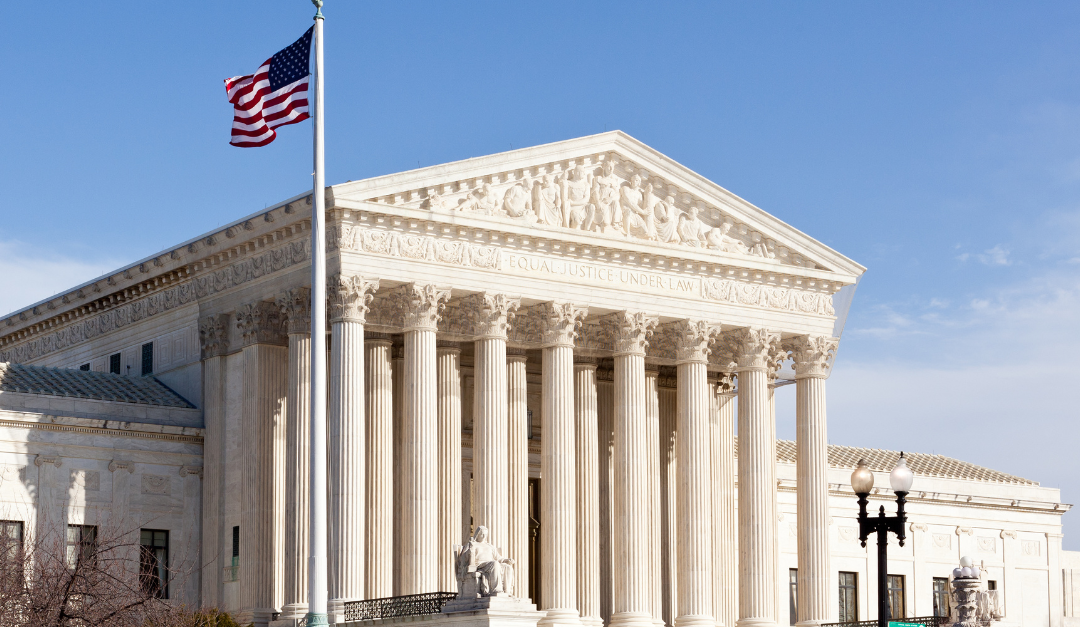In a significant shift, the Supreme Court has restricted the regulatory authority of federal agencies, complicating their efforts to oversee environmental, public health, and workplace safety issues. The Court’s 6-3 decision dismantled the 1984 Chevron ruling, which had instructed lower courts to defer to federal agencies when interpreting ambiguous laws passed by Congress.
Some of the healthcare regulatory agencies that this decision will impact include:
- Food and Drug Administration (FDA), which regulates pharmaceuticals, medical devices, biologics, food, cosmetics, and tobacco products. Healthcare businesses must comply with FDA regulations to approve, manufacture, and market drugs, medical devices, and other health-related products. The FDA ensures that these products are safe and effective for public use.
- Centers for Medicare & Medicaid Services (CMS), which administers the nation’s major healthcare programs, including Medicare, Medicaid, and the Children’s Health Insurance Program (CHIP). CMS sets reimbursement rates, coverage policies, and quality standards significantly affecting healthcare providers, insurers, and related businesses.
- Centers for Disease Control and Prevention (CDC), which focuses on public health and disease prevention. The CDC provides guidelines and recommendations that healthcare businesses often follow to ensure safety and prevent the spread of infectious diseases. Compliance with CDC guidelines can affect operational protocols in healthcare settings.
- National Institutes of Health (NIH), which conducts and supports medical research. Healthcare businesses, particularly those involved in pharmaceuticals and biotechnology, rely on NIH research for new treatments and innovations. NIH funding and research can drive the development of new medical technologies and therapies.
- Office for Civil Rights (OCR), which enforces federal civil rights laws and HIPAA (Health Insurance Portability and Accountability Act). Healthcare businesses must comply with HIPAA regulations to protect patient privacy and data security. The OCR also ensures that healthcare providers do not discriminate against patients.
- Occupational Safety and Health Administration (OSHA), which ensures safe and healthful working conditions by setting and enforcing standards. Healthcare businesses must adhere to OSHA regulations to maintain safe workplaces for employees, particularly in environments like hospitals and clinics where occupational hazards are prevalent.
- Drug Enforcement Administration (DEA), which enforces the controlled substances laws and regulations. Healthcare providers and businesses that handle controlled substances must comply with DEA regulations to prevent misuse and diversion of these substances.
- Health Resources and Services Administration (HRSA), which improves access to healthcare services for people who are uninsured, isolated, or medically vulnerable. HRSA programs and funding can affect healthcare providers and businesses that serve underserved populations.
- Agency for Healthcare Research and Quality (AHRQ), which focuses on improving the quality, safety, efficiency, and effectiveness of healthcare. Healthcare businesses use AHRQ research and guidelines to enhance care quality and patient outcomes.
- Federal Trade Commission (FTC), which enforces antitrust laws and protects consumers from unfair business practices. Healthcare businesses, including insurers and pharmaceutical companies, must comply with FTC regulations to ensure fair competition and protect consumer rights.
- Office of Inspector General (OIG), which conducts audits, investigations, and inspections to prevent and detect fraud, waste, and abuse in the U.S. Department of Health and Human Services programs. Healthcare businesses must adhere to regulations and standards to avoid fraudulent activities. Non-compliance can lead to severe penalties, including fines and exclusion from federal healthcare programs.
What is the Chevron Doctrine?
The Chevron doctrine originated from a 1984 Supreme Court case involving the Environmental Protection Agency (EPA) during Ronald Reagan’s presidency. The ruling allowed the EPA to interpret the Clean Air Act, establishing a precedent for judicial deference to agency expertise in cases of ambiguous legislation.
For nearly 40 years, the Chevron doctrine has been a cornerstone of administrative law, ensuring that judges upheld thousands of regulations by deferring to agency expertise. However, conservatives and business groups have long criticized it for granting excessive power to the executive branch.
The Biden administration had defended the Chevron doctrine, cautioning that overturning it could destabilize the legal system and cause significant disruption.
The Supreme Court’s decision to overturn the Chevron doctrine represents a significant change in the balance of power among the branches of government. It grants more interpretative authority to federal judges, potentially complicating the implementation of crucial regulations. As this new legal framework takes effect, its impact on federal agencies, regulatory practices, and the American public will become increasingly evident.
The Supreme Court’s decision signifies a shift in power from the executive branch and Congress to the judiciary. Federal judges now have greater authority to interpret laws, departing from the previous standard of deferring to agency expertise.
This ruling aligns with the conservative agenda to curtail federal government influence, a stance that has gained support among former President Donald Trump’s followers. By limiting federal regulatory power, the ruling could hinder efforts to tackle significant challenges, reflecting the conservative aim of reducing government intervention.
In writing for the majority, Chief Justice John Roberts stated that federal judges must independently determine whether agencies have acted within their legal boundaries. He clarified that the ruling does not affect past cases decided under the Chevron doctrine but sets a new standard for judicial review going forward. The decision comes when presidential administrations increasingly rely on federal regulations to implement policy changes, especially with a closely divided Congress. This ruling could subject numerous regulations—including rules impacting healthcare businesses—to heightened legal challenges.
Consequences for Federal Agencies
The Supreme Court’s decision to overturn the Chevron doctrine will significantly impact all federal agencies by increasing judicial scrutiny and legal uncertainty. Agencies historically relying on judicial deference to interpret ambiguous laws will now face more frequent and rigorous court challenges to their regulatory decisions. This change could lead to delays in regulatory actions, inconsistent rulings across different jurisdictions, and higher compliance costs for businesses as they navigate a more complex and fragmented legal landscape.
For example, this shift for an agency such as the FDA means that its processes for approving drugs and medical devices may become more contentious and slower, potentially hindering innovation and public access to new treatments. Federal agencies must adapt by providing more detailed justifications for their decisions and seeking clearer legislative mandates from Congress. Overall, the decision represents a substantial change in the balance of power between the judiciary and federal regulatory bodies, necessitating strategic adjustments to ensure regulatory effectiveness and compliance.
Impact on Healthcare Regulatory Boards
The Supreme Court’s decision to overturn the Chevron doctrine primarily impacts federal agencies and their regulatory authority. However, its implications will likely indirectly affect state boards, especially those that oversee healthcare and other regulated industries by influencing judicial philosophy and precedent at the state level. State judges might be more inclined to scrutinize state agency interpretations and be less deferential, mirroring the federal judiciary’s approach. This shift could lead to more legal challenges against state board decisions.
Conclusion
Healthcare businesses, including pharmaceutical companies, medical device manufacturers, and healthcare providers, operate within a regulatory environment shaped significantly by federal agencies’ interpretations and enforcement actions. The Supreme Court’s decision introduces a new level of legal uncertainty and complexity for these businesses. Increased judicial scrutiny of agency decisions means that healthcare companies may face more legal battles over regulatory compliance, potentially leading to higher costs and longer timelines for bringing new products to market.
Moreover, the heightened potential for regulatory inconsistency across different jurisdictions could complicate nationwide compliance strategies for healthcare businesses. Companies may need to navigate a more fragmented regulatory landscape, where the interpretation of laws varies significantly from one judicial district to another.


